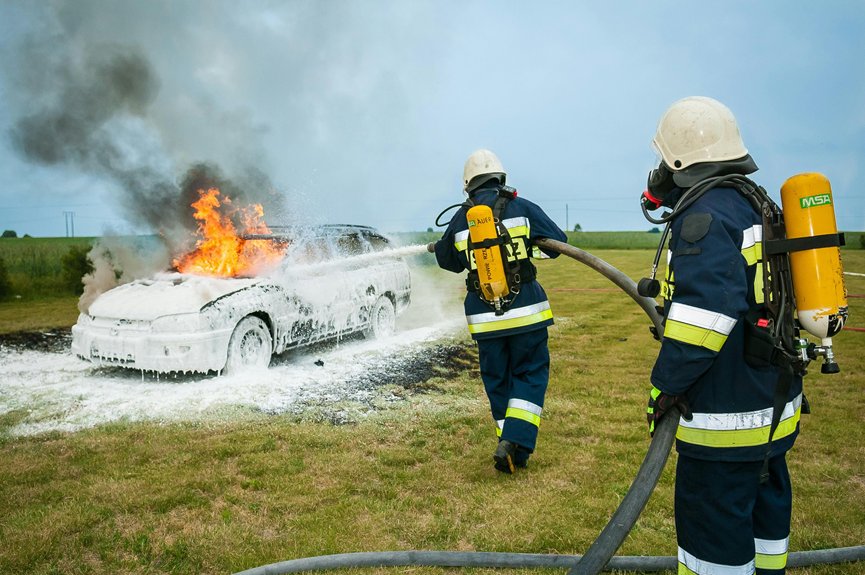Fire-rated expanding foam is specially formulated to seal gaps in fire-resistant walls, effectively helping to prevent the spread of flames and smoke during an incident. Composed of polyurethane with flame-retardant materials, this foam often includes intumescent agents that expand when exposed to heat.
Certification and compliance with safety standards are essential to ensure the effectiveness of these products. Proper application and regular inspections are crucial for maintaining safety; however, it is important to note that not all foams are suitable for fire-rated purposes.
When selecting fire-rated expanding foam, it is vital to consider the specific requirements of your project. Look for products that are specifically designed for fire-resistance and are backed by appropriate certifications. Understanding the differences between available options can ensure you choose the right product for your needs.
By using fire-rated expanding foam correctly, you can significantly enhance the fire safety of your property, ensuring that you are better prepared in the event of an emergency.
Composition and Key Components
The composition of fire-rated expanding foam predominantly consists of polyurethane polymers, which create the fundamental structure and offer fire resistance. This type of foam is produced through reactions between isocyanates and polyols, often incorporating flame-retardant materials. Some formulations feature intumescent agents that expand upon exposure to heat, effectively sealing gaps and inhibiting the spread of fire. Flame-retardant additives, including mineral fillers and halogen-free alternatives, are utilised to minimise flames and smoke production. Propellants, typically CFC-free, such as hydrocarbons, are employed to dispense the foam and regulate its expansion. The physical characteristics of the foam, including density, cell size, and expansion ratio, are influenced by the specific formulation. Polyurethane-based foams are chosen for fire protection due to their excellent adhesion and pliability. Collectively, these components work in harmony to establish a robust, fire-resistant barrier that enhances safety and provides peace of mind in building protection.
Standards and Certification Requirements
To ensure that fire-rated expanding foam performs safely and effectively, strict standards and certification processes have been established and must be adhered to. These include compliance with the relevant fire safety codes, which require products to be listed for sealing fire-rated wall penetrations.
Testing standards assess flame spread and smoke development, ensuring that materials meet essential fire safety criteria. Building regulations specify that foam plastics must have low flame spread and smoke developed indices, while barriers such as gypsum board play a crucial role in preventing the spread of fire.
Certifications verify the safety and performance of these products, with recognised listings confirming their compliance with safety standards. Manufacturers are required to provide comprehensive documentation, including safety data sheets, to support their claims.
Regular testing and ongoing compliance are essential to ensure that these advanced materials maintain their fire-resistance qualities, thereby safeguarding both buildings and their occupants.
Effective Application Techniques
Applying fire-rated expanding foam correctly is crucial for ensuring its effectiveness in fire protection.
First, preparation is essential. Clear the workspace of dust and debris to enhance the foam’s adhesion. Shake the can thoroughly to ensure proper mixing, and always wear safety goggles and gloves for protection.
Keep the can upright during application to control the flow of foam. Begin sealing gaps from the bottom upwards to maintain structural integrity. Use a straw attachment to direct the foam into tight spaces and start with a modest bead, adding more as necessary.
Monitor the foam’s expansion closely to avoid overfilling, ensuring that all gaps are completely sealed. Proper application techniques are vital for maintaining the foam’s fire-resistant properties, which can be compromised if the foam is improperly installed or damaged.
Employing proper techniques guarantees a reliable fire barrier, slowing the spread of fire and safeguarding lives and property.
Limitations and Best Practices
While fire-rated expanding foam provides essential fire protection, it’s crucial for users to be aware of its significant limitations. Fire ratings, such as those denoting hours of resistance, are specific to particular tested conditions and may not reflect all real-world situations. The commonly used pink foam often lacks adequate fire integrity and insulation, which can lead to its failure during actual fire incidents. Many types of expanding foam are combustible and can degrade rapidly when exposed to high temperatures, compromising their fire-stopping capabilities. Additionally, some foams aren’t certified for fire stop applications and may only manage flame spread, without addressing smoke or toxic gas emissions, thus posing a safety risk. Environmental factors, such as exposure to moisture, can negatively affect the performance of these foams. Furthermore, certain foams may remain flammable or have poor adhesion to specific surfaces. Over time, the effectiveness of fire resistance can diminish due to various environmental influences. Professional guidance is essential to determine whether a foam is suitable for a particular application and to ensure it complies with relevant standards. Regular inspection and timely replacement of fire-rated expanding foam are vital to maintain ongoing safety and ensure optimal performance in the event of a fire.
Conclusion
Fire-rated expanding foam is an essential material for enhancing safety in a variety of structures. Its formulation, which includes fire-resistant components, adheres to specific standards and certifications, ensuring dependable performance during fire incidents.
Utilising appropriate application techniques is crucial for maximising the foam’s effectiveness, while being aware of its limitations helps to prevent common errors. When applied correctly, fire-rated foam serves as a significant barrier against the spread of fire, providing reassurance and improved safety in both residential and commercial properties.
This specialised foam not only contributes to fire safety but also plays a role in sound insulation and energy efficiency, making it a versatile choice for builders and homeowners alike.

